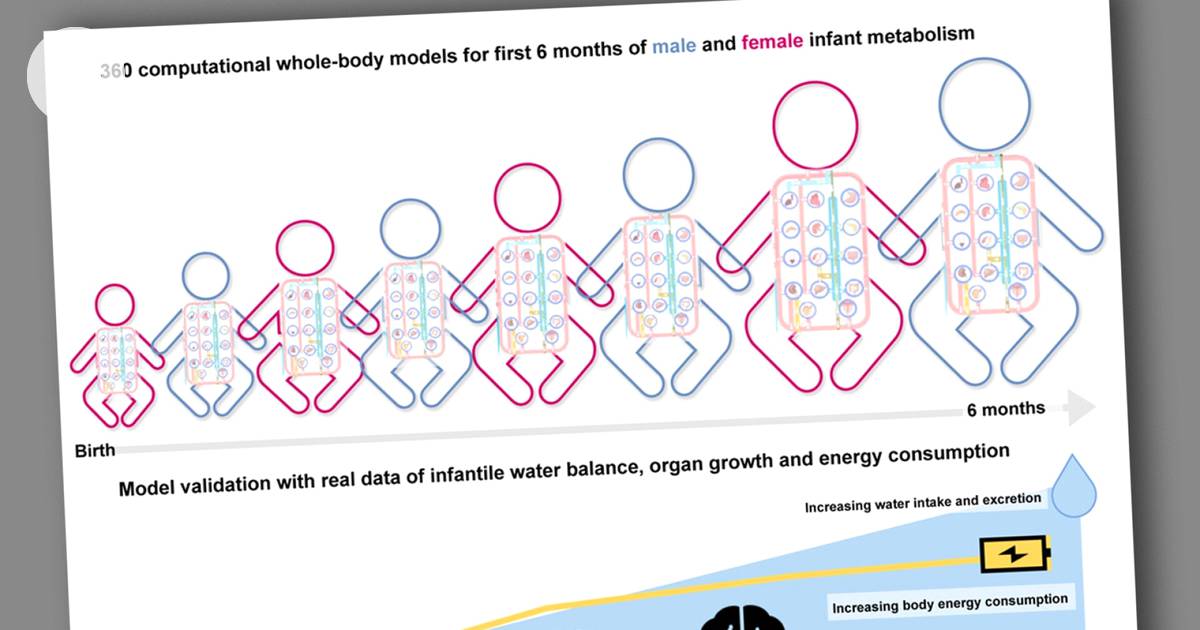Digital the baby is a computer model that monitors the delicate development of the baby and especially the metabolism.
Twin researchers at the University of Galway on the west coast of Ireland created 360 computer models from data collected on the babies. They especially model the metabolism of babies.
Metabolism is investigated with the help of data obtained from 26 organs and six cell types. In addition, there are more than 80,000 reactions measuring metabolism in the computer’s memory.
Digital the baby is, in a way, a computational model of the baby’s entire body. Its background information is compiled data from approximately 10,000 newborns.
Of course, the basic data includes gender and birth weight, but also a large number of metabolic concentrations.
With this information, a doctor or researcher can monitor and compare the metabolism of an individual baby.
Digital the baby was developed by a team of digital metabolism twin researchers at the University of Galway and a group of researchers at the University of Heidelberg.
The electronically assembled baby aims to make it possible to use precision medicine in the treatment of the baby more precisely.
Digital comparison can facilitate the treatment of diseases typical of babies, such as inherited metabolic diseases.
Digital models increase the understanding of what the baby’s metabolism is like, says the Medical Xpress news release.
“With babies has its own kind of metabolism,” says the researcher Elaine Zaunseder from the University of Heidelberg.
“Babies need, for example, more energy than usual, which regulates body temperature. They have more skin surface area compared to their body mass.”
However, babies do not know how to crawl or protect their bodies during the first months of life. The metabolism of the baby’s body must therefore ensure that he stays warm.
“We identified the metabolism involved and translated it into the language of mathematics,” says Zaunseder.
The digital baby offers the opportunity to model how much energy the baby’s organs need. It is very different in babies compared to adults.
Researchers have in their models, for example, data on the breast milk received by newborns.
The development of the digital baby was monitored in experiments for six months. They “grew” at the same rate as a baby fed real milk.
“The models show that we can predict the development of the baby’s diseases with the help of certain biomarkers,” says the professor Ines Thiele. He is the research director of the entire project from the University of Heidelberg.
“This work is a step towards developing a digital equivalent of one baby’s metabolism.”
It could revolutionize the treatment of babies and children. A digital twin could perhaps tailor treatments to children’s illnesses.
The study was published by scientific journal Cell Metabolism.
